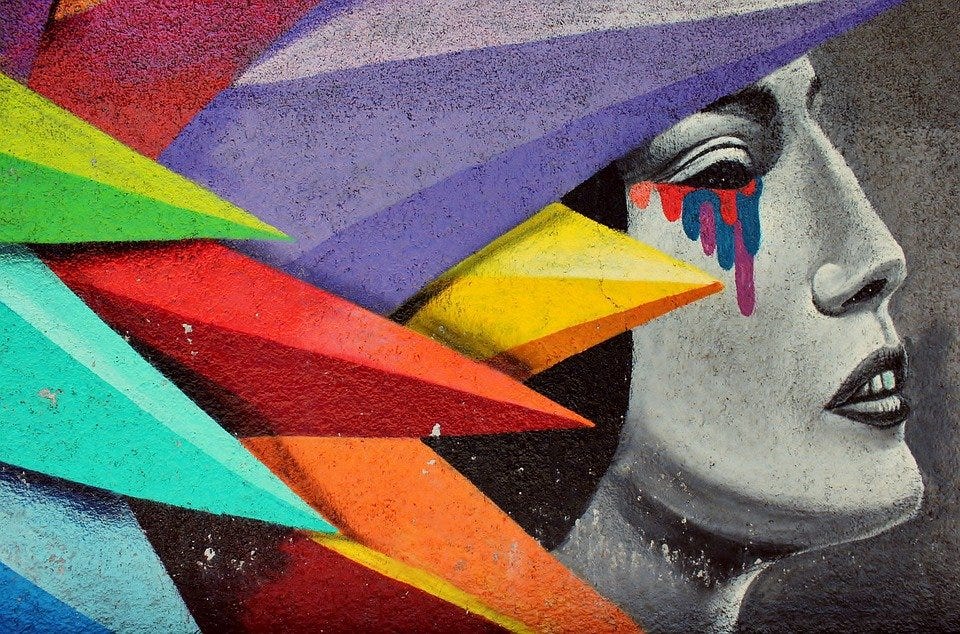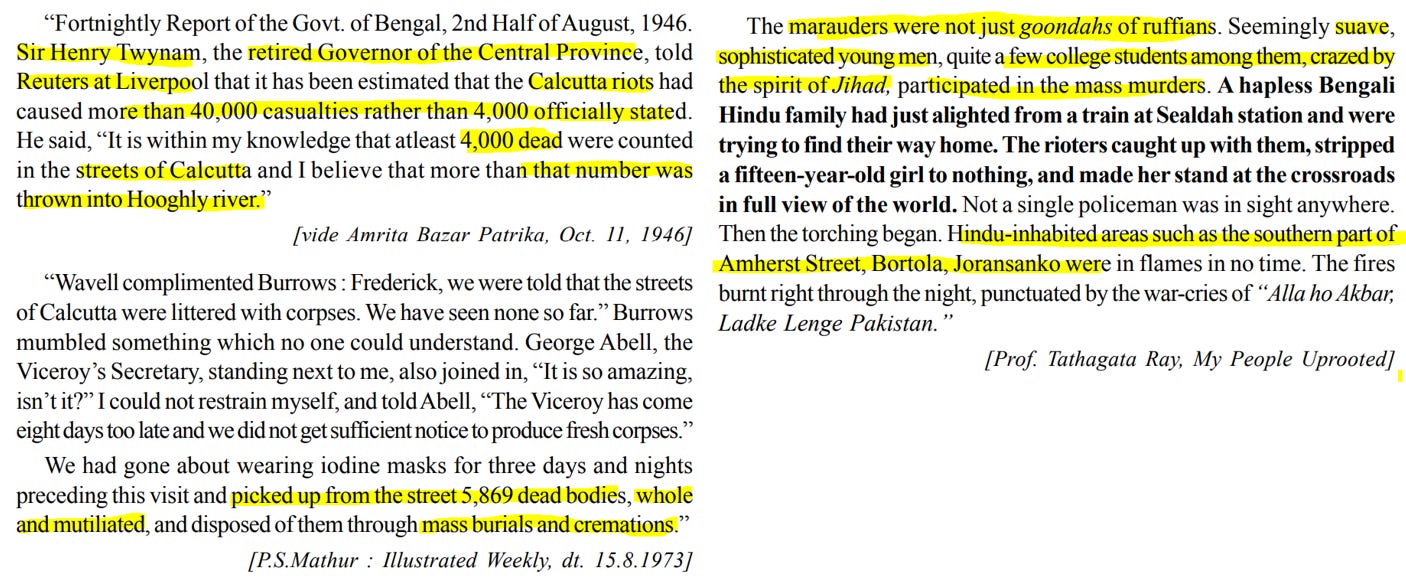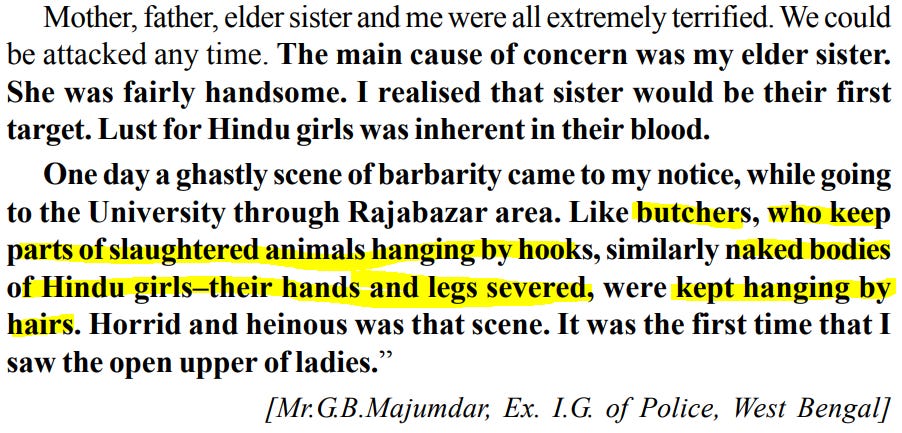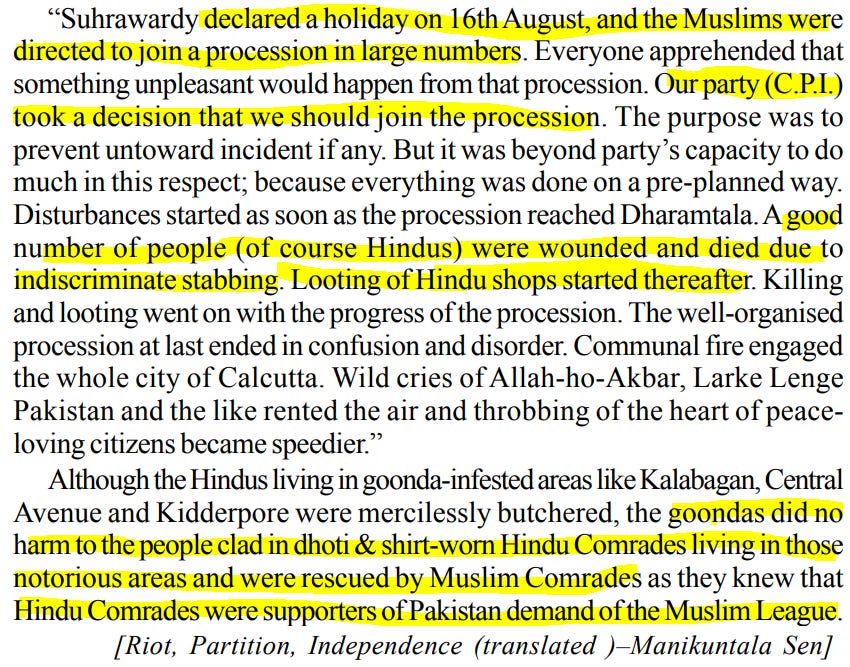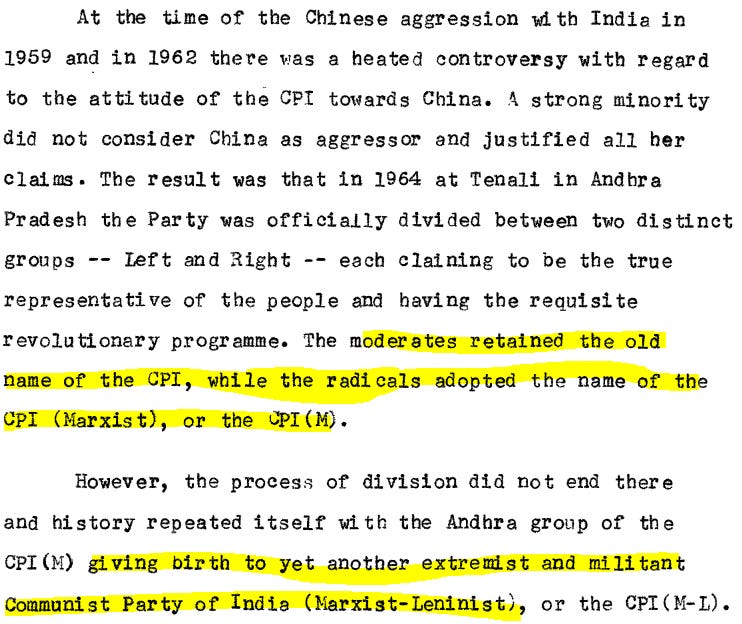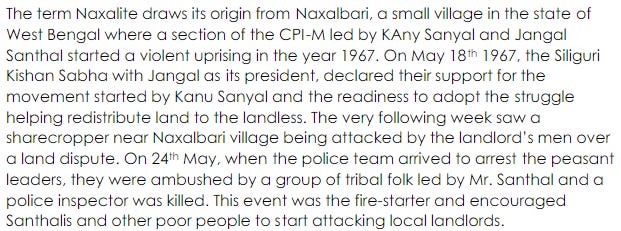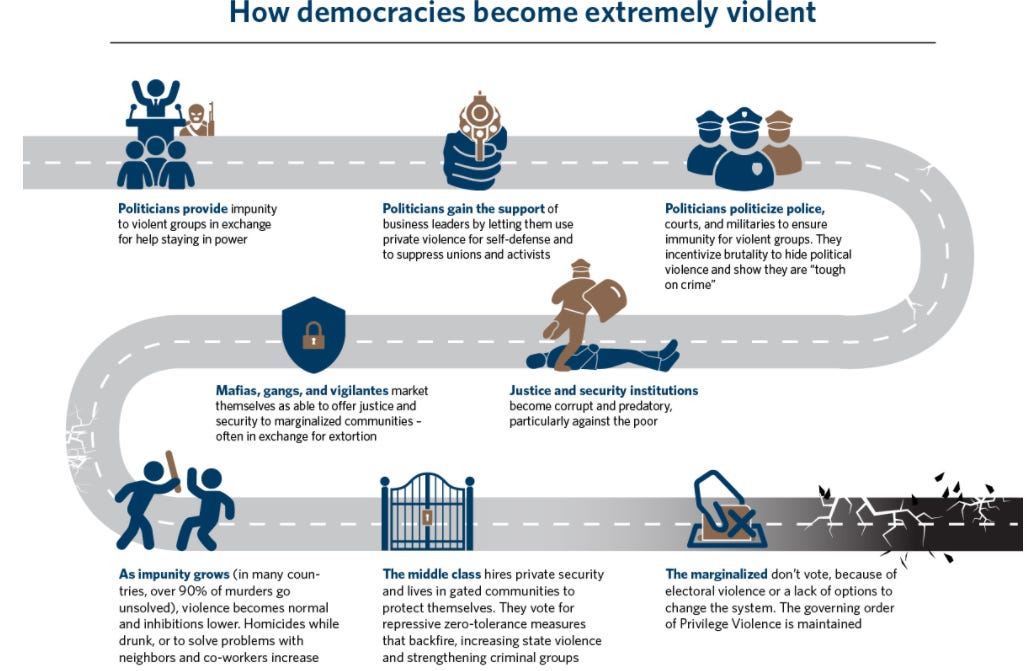Insightful newsletter of Drishtikone: Issue #273 - Bengal's Redemption
Bengal has seen its culture and destiny being held hostage to violent ideologues. All for its good, of course! The violence and the hatred is a cycle that is embedded in its karma. Time to break it.
Image by justraveling from Pixabay
“Postmodernity is said to be a culture of fragmentary sensations, eclectic nostalgia, disposable simulacra, and promiscuous superficiality, in which the traditionally valued qualities of depth, coherence, meaning, originality, and authenticity are evacuated or dissolved amid the random swirl of empty signals.” ― Jean Baudrillard
Karma is an acquired memory system.
From your own past. Your forefathers and mothers, your society, your species, and the universe.
Like the lab rats that were given electric shocks as they were given a whiff of ammonia to burn that combination of memories in seven subsequent generations such that a whiff of ammonia created fear in the newborns, we all carry our memories of electric shocks-ammonia combinations.
The most damning being the urge for violence. When an ideological intervention with a fetish for fanatic action unleashes on any society to change its inherent character, it creates its own multi-generational memories.
The more brutal the execution, the more devastating its memory.
While walking down a road in Ahmedabad during the garba season at 2.30 am when one saw a bunch of young girls walking down freely, one wondered how tough such a thing was in North India. The karmic memories of a father in Punjab still are weighed down by the marauding hordes of Islamic invaders abducting young girls, while that of a Gujarati father may not be so heavy a burden to carry.
Even today, when the Jews greet you with a “Shalom,” they will proudly exclaim how the wish of “peace” is so beautiful. Yes, when all you have ever witnessed is brutal and incessant violence through generations on end! In such a karmic stew, just the wish of peace is such a great oasis.
India was a society of those who longed to break all bonds and seek liberation.
Bengal, a society where a Chaitanya did not need a Gita to actualize Krishna. He had the sweetness of Krishna erupt naturally. A society where even a Guru like Ramakrishna would hopelessly beg his disciple Naren to come back - for, a larger purpose had to be fulfilled. A monk - Vivekananda - had to be given shape who could carry the message of enlightenment to the US and West, not via conquest but embrace.
These cultures are being destroyed and weighed down by brutality of the inhuman level of violence. It has its consequences. It is upon our generation to break that cycle.
And add a dash of sweetness to a pool of dark and bitter bloody mix. It is time to break the karmic cycle of violence.
Bengal - society defined by unabashedly violent ideologies
It was Diwali night in Nandigram on November 11th, 2007. The ruling Communist Party of India (Marxist) - CPI (M) - sent the “red army” of comrades to teach the “enemy” a lesson.
The goal?
To “liberate” the villages controlled by Bhoomi Uchhed Pratirodh Committee (BUPC) which was led by the Trinamool Congress (TMC). The Central Reserve Police Force (CRPF) was not even allowed into Nandigram until November 13.
By then the Communists had eliminated the TMC presence and taken over the area.
It was yet another unapologetic dance of extreme violence by the Communists. By official statistics, 11 were left dead and hundreds other injured
The leaders in Kolkata couldn’t afford to fail this time. So when Chief Minister Buddhadeb Bhattacharya made his first public statement, there was no apology, no remorse in the voice of the man who once marketed himself as the human face of Indian communism. He said in uncharacteristic defiance: “They (Trinamool Congress people) have been paid back in their own coin. Our people were desperate. If hellish peace exists in Nandigram now, did the last 11 months have heavenly peace?” Almost everyone who was not a Marxist condemned the savagery, beginning with Governor Gopal Krishna Gandhi. TC chief Mamata Banerjee, whose political advantage in Nandigram comes to an end with this takeover, has been touring the area on a motorbike. (Source: IndiaToday)
The brutality may have come out in the media and gotten criticized, but this wasn’t the first time that the Communists had unleashed the most brutal of crimes on Bengal’s citizens. It was their way of politics.
As was that of their successors and erstwhile victims - the Trinamool Congress (TMC). The very cadres which had suffered at the hands of the Communists were now butchering the communists and others.
By 2009, the Communists were crying about how the TMC had butchered its cadres.
CPI(M) on Thursday accused Trinamool Congress chief Mamata Banerjee of leading an “unholy alliance” with Maoists in West Bengal to destabilise the elected Left Front government in the state. “The Trinamool Congress is trying to destabilise the pro-poor Left government by unleashing terror in connivance with Maoist forces in parts of West Bengal,” CPI (M) Politburo member Brinda Karat said addressing a protest rally here by party workers against the unabated violence in Lalgarh. Alleging that the Trinamool chief is leading the violence from behind the scene,Karat said the Maoists and the “Trinamoolis” are killing her party workers and “conspiring to disrupt law and order in the state”. “So far 53 comrades have been killed in the orchestrated brutal attacks which has also got backing of the main opposition party,” she said adding that the planned and systematic strategy to weaken Left parties in its bastion by “fascist forces” would be resisted in all forms. (Source)
This happened in 2014.
A day after voting took place, several people, including women from the Adivasi families, were allegedly beaten up by local Trinamool Congress (TMC) workers in Golbunia village of Sandeshkhali block in North 24 Parganas district. TMC workers told residents of Golbunia that they have committed a mistake by voting for BJP in the general elections. The injured were cordoned off in the village and not allowed to seek medical help or register a police complaint. On May 18, five days after the assault, Golbunia residents filed a complaint but continue to face regular intimidation. (Source)
The poor, the brainwashed masses had been rendered as cannon fodder in the mass-scale murders that had become the fate of Bengal.
Back to the beginning
As the communist cadres’ slogan went - they wanted to “live fighting”. To death of course.
“Lorai, lorai, lorai, chai, lorai kore bachte chai”, (Fight, fight, fight, we want to live fighting) (Source)
Let us go back to August 1946. The “Direct Action Day.” Jinnah had announced the Direct Action Day to counter the growing clout of Nehru and Congress Party. Bengal’s Suhrawardy, the local politician who was a goon and corrupt guy, took the lead. On August 16th, 1946 an unbelievable level of hell was unleashed in Bengal.
The Communist leader Mohit Sen wrote:
My own experience was that the Great Calcutta Killings of August 1946 was a one-sided affair with the Muslim communalists and criminals going ahead to do what they did with practical immunity and little resistance. It was Muslim communalism that took the offensive and blighted Calcutta, at least. (Source)
By the next day, Muslim marauders had been unleashed on the Hindus in Bengal. Syed Farooqui, the President of Garden Reach Textile Workers' Union (a Communist group) along with Elian Mistry led a ghastly massacre of poor Hindu mill workers in the mill compound of Kesoram Cotton Mills in the Lichubagan area of Metiabruz.
On the 17th, Syed Abdullah Farooqui, President of Garden Reach Textile Workers' Union, led a radical mob into the compound of Kesoram Cotton Mills in Metiabruz. The death toll of Oriya labors residing in the mills were reported to be 7000 to 10,000. (Source)
The British knew what was planned and bound to happen. They just let it go on. The massacre numbers were obscene.
Hindu women and girls were specifically made targets. They were raped, killed, and hung out as warnings in the most inhuman way possible. Like animals.
In all this, the communists were only busy saving their own comrades - if at all. Unlike the Kesoram Cotton Mills, where the Hindu workers were hacked down in thousands, in some cases, the Muslim communists saved their colleagues who were Hindus.
The Communists were always in it for themselves. They did not care as to what happened to the society or their nation. What they wanted was power at any cost.
That is why what happened in Bengal when China attacked India in 1961 is extremely disturbing. As the Chinese attacked India in 1961, the Communist Party was going through an upheaval within.
After the war, 50+ Communist leaders had been thrown into jail. Interestingly, as per the CIA declassified papers, 4 radio sets were found in China Review in Calcutta to listen to the broadcasts from Peking (now Beijing).
Any guesses who those 50 Communist leaders in Bengal - that were colluding with the Chinese - were?
Well, three of them were Jyoti Basu, VS Achuthanandan, and Harkishan Singh Surjeet. (Source: South China Morning Post).
The year was 1962, the Communists had held China above Indian national interests. This understanding had taken ground within India. The tales of these Communist leaders in jail are instructive. (Source – Indian Express archive)
Review these CIA declassified documents for a better understanding of the role played by the Communists and also read “How Indian Communists committed Acts of Treason against the Indian state” – for a detailed discussion on how the Communists have undermined India.
1. The Sino-Indian Border Dispute Section 1: 1950-59
2. The Sino-Indian Border Dispute Section 2: 1959-61
3. The Sino-Indian Border Dispute Section 3: 1961-62
4. The Indian Communist Party and Sino-Soviet Dispute
After the war against China, the Indian Communists were having their own infighting. The first split in the Communist party happened in 1964. The original party Communist Party of India (CPI) divided and the Communist Party of India (Marxist) - CPI (M) - was formed.
This is how, over time, the Communist group that was radical, violent, and abusive started their walk towards more legitimacy. And, it was a way for the Communists to add to their own cadres as well as create a fighting force.
The Naxal movement started by using social inequities that were prevalent in Bengal - based on the landlords/zamindars who were propped up by the British for their revenue collection and land management. By pushing them while giving them unlimited powers, the British had turned them into a land-holding mafia with full force against the peasantry.
This was used as a ruse by the Naxals to start rural and then extend to the urban centers.
The Naxals started targeting everything that had to do with the pride of Bengal and the contribution of Bengalis in the Independent struggle and those who were nationalists.
Though the villages were to be the epicentres of the Naxalite movement, Calcutta soon emerged as a major site of Naxalite activities. Naxal presence was particularly strong in neighbourhoods such as Shyambazar, South Sinthi-Tobin Road, East Sinthi, Kashipur-Baranagar, Dumdum, Taltala, Entally Beleghata, College Street, Shobhabazar, Jadavpur, Tollugunj, Kashba, Behala, etc. Naxalites turned Calcutta into a virtual battlefield.[5] Naxal students targeted the ‘bourgeois education system’, questioned the glory of the Bengal Renaissance and the Indian nationalist movements, and attacked the representatives of the state they wanted to overturn. (Source)
The idea was to turn Bengal into a hotbed of anarchy and the center of anti-Indian sentiment.
These Communists, who had not just fought on behalf of the Chinese in India, but had used the poor and often destitute peasants as cannon-fodder, would give lectures on morality and improving political consciousness of the society! Jyoti Basu, the guy who had been arrested because he was collaborating with the Peking establishment during the Indo-China war via radio sets, and yet became the Chief Minister of the then most industrialized state in India went onto lament how it was upon him and his comrades to explain the difference between “friends and enemies” to the people. What a dastardly flavor of chutzpah that he could even believe in his own righteousness after all that.
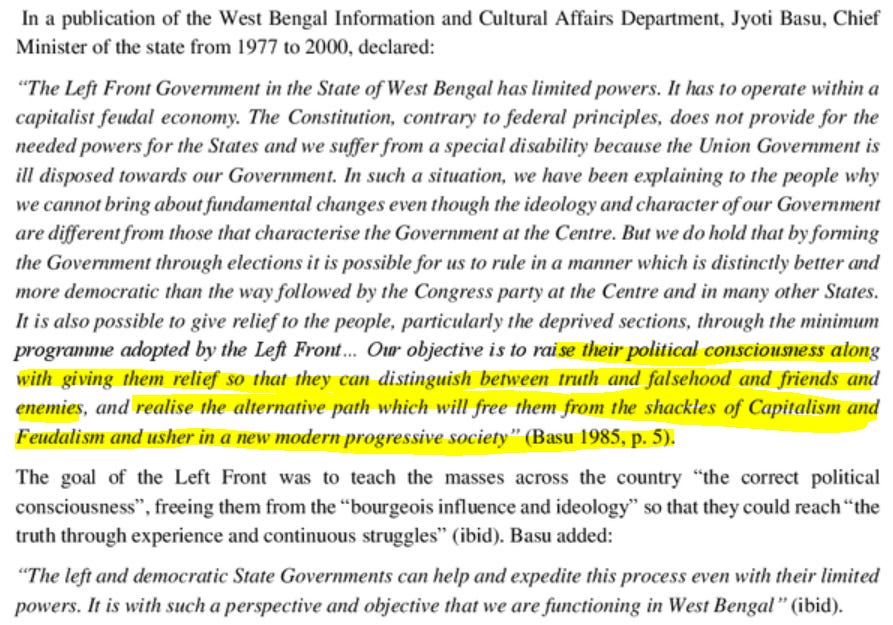
The whole governance in Bengal was compromised. The integrity and the very basis of democratic institutions were bastardized by the Left. And, if anyone carried out as much as a protest against this subversion, it was dismissed as “conspiracy against the Left rule.”
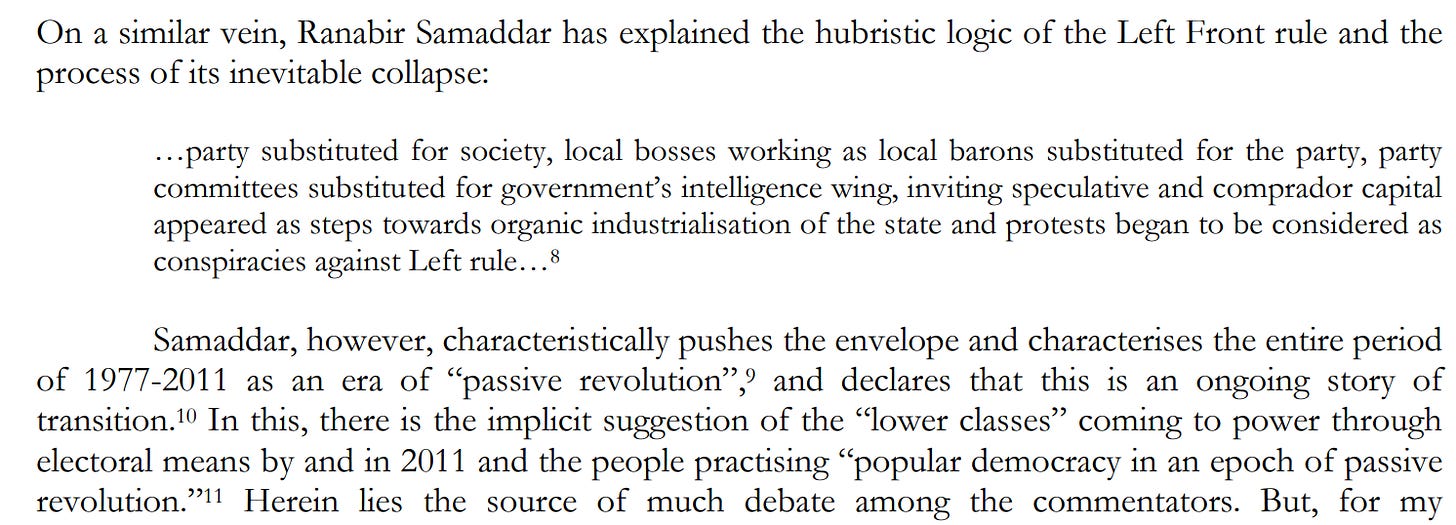
That is how the Communists started - by seeding the Naxals and building up on the misery of rural peasantry to create a large base in urban centers, specifically Calcutta. They subverted the educational institutions and coopted the students from the top universities and colleges to become Naxals. If they didn’t then they were murdered if they were prominent and did not fall in line.
As the entire Bengal economy was run into the ground, Trinamool (Trina means grass, and mool means root) Congress (a name which took a dig at the Indian National Congress obviously) used the exact same tactics - just more brutal - to throw the Communists out. Violence remaining intact.
Rachel Kleinfeld, a senior fellow in the Democracy, Conflict, and Governance Program, at Carnegie Endowment think-tank discusses why are some societies so violent and how can they be made safe? (Source)
She shows how a violent closed-loop perpetuates itself.
One of the most critical aspects of violent societies is a complete breakdown of law and order.
How did the Communists achieve that in Bengal?
Customized enemies and alienating culture
The Marxist agenda was always very clear - violence was the main tool of the uprising.
In The Communist Manifesto, Karl Marx and Friedrich Engels wrote:
The proletariat, the lowest stratum of our present society, cannot stir, cannot raise itself up, without the whole superincumbent strata of official society being sprung into the air. Though not in substance, yet in form, the struggle of the proletariat with the bourgeoisie is at first a national struggle. The proletariat of each country must, of course, first of all settle matters with its own bourgeoisie. In depicting the most general phases of the development of the proletariat, we traced the more or less veiled civil war, raging within existing society, up to the point where that war breaks out into open revolution, and where the violent overthrow of the bourgeoisie lays the foundation for the sway of the proletariat. (Source)
As for the certification of who was proletariate and who was the bourgeoisie, it was all a matter of propaganda and spin. For example, the Communists have always abused Netaji (as an imperialist) and Tagore as (a bourgeois poet).
The undivided Communist Party of India had denounced Bose as an “imperialist agent” and “Tojo’s dog” (referring to Hediki Tojo, the Japanese prime minister during World War II). The party had also dubbed Tagore a “bourgeois poet” and ridiculed him as an “anandabadi kabi (poet who only celebrates joy)”. (Source)
Sadly, the common Bengali kept looking on and embracing the larger agenda of the Communists without any question.
Not just icons like Netaji and Tagore, but the entire education system, which had hitherto created Bengal as the center of scientific and artistic excellence in India was targeted as well.
Though the villages were to be the epicentres of the Naxalite movement, Calcutta soon emerged as a major site of Naxalite activities. Naxal presence was particularly strong in neighbourhoods such as Shyambazar, South Sinthi-Tobin Road, East Sinthi, Kashipur-Baranagar, Dumdum, Taltala, Entally Beleghata, College Street, Shobhabazar, Jadavpur, Tollugunj, Kashba, Behala, etc. Naxalites turned Calcutta into a virtual battlefield.[5] Naxal students targeted the ‘bourgeois education system’, questioned the glory of the Bengal Renaissance and the Indian nationalist movements, and attacked the representatives of the state they wanted to overturn. (Source)
Students from Presidency College, Maulana Azad College, Scottish Church College, Calcutta University, Jadavpur University, Calcutta Medical College, R.G. Kar Medical College, and other important institutions were coopted into the naxal and communist movement.
When your greatest poets, leaders, colleges, and intellectuals are part of the enemy camp, and violence your only ideological reaction, then breakdown of the society is a natural consequence.
That is why over time every cultural icon and achievement has been attacked during the communist regime. Everyone and everything - from Bengal Renaissance to freedom struggle icons to top colleges and institutions and the other cultural ambassadors - were clubbed together as the bourgeois class. Worthy of destruction.
A culture that has always been synonymous with beauty, art, music, dance, and poetry had only one facet which defined it - violence!
The political and social rule had just one currency - death. Brutal death with unspeakable horrors signed all over it!
Mamata Banerjee’s ascendency is like a caricature defeating the original and decimating the last remaining social attachment to a dilapidated system that was the Communist Party.
In this election, BJP is seeking a clear majority in Bengal. This will turn the tide in this state after 54 years!
That is why one entry in BJP’s election manifesto was so intriguing. The promise of bringing back Bengal’s greatness in art and science. Redemption of the quintessential Bengali-ness.
Tagore Prize at par with Nobel Prize and Satyajit Ray Int'l Awards at par with Oscars will be started to bring back Bengal's cultural richness. (Source)
Putting Bengal’s icons back on the pedestal they deserve will be the first step in defeating the cycle of violence that was created by the collaboration of the Muslim League and the Communists.
This election is not as much about parties as it is about the redemption of the soul of Bengal itself.
Will Tagore remain shackled by the hatred and bigotry of an ideologically violent force or will his poetry finally see the freedom that the poet always dreamed to wake up in?
market corner: 10 quick bytes
Disinvestment target of FY22 achievable; LIC IPO to bring in Rs 1 lakh crore - more
Modi’s Nal Se Jal brings tap water to 4 crore households since launch, 3 states achieve 100% target - more
Life insurers shell out Rs 2,000 crore as Covid-19 death claims, shows data - more
The US not yet ready to lift tariffs on China: Trade representative Tai - more
2020-21: Net tax receipts have seen an increase by Rs 1.2 lakh crore over the revised estimate - more
Beer sales get a boost from state excise policies - more
Public procurement from GeM portal crosses Rs 1 lakh cr: CEO Talleen Kumar - more
Indian rupee logs over 4 pc gain this fiscal amid headwinds on the economic front - more
84.5 percent of new COVID-19 cases reported from 8 states in last 24 hours in India - more
Byju’s raises $460 million in funding, valuation soars to over $13 billion - more
nota bene
Love Jihad disagreement: CPM and LDF are caught in a conundrum after LDF ally Kerala Congress (M) leader Jose K Mani issued a statement on ‘Love Jihad’. In a TV interview, Mani stated, “Love jihad has again come up as an issue. Society has apprehensions about it. As the issue has emerged again, the apprehensions about it should be cleared.” This statement has sparked controversy in the ruling left alliance just ahead of the Assembly election, reported the Indian Express. (Source)
China tests Taiwan: Ten Chinese military aircraft including fighter jets entered the southwestern corner of Taiwan's air defense identification zone on Monday, the island's defense ministry said, in a further escalation of tension across the sensitive Taiwan Strait. The island's defense ministry said the air force deployed missiles to "monitor" the incursion into the southwestern part of its air defense identification zone. It also said its planes warned the Chinese aircraft, including by radio. (Source)
Free at last: Suez Canal ship blocking the traffic in the vital waterway has been freed from the shoreline as per media reports that have cited local authorities. "Admiral Osama Rabie, head of the Suez Canal Authority, has announced the resumption of shipping traffic in the Suez Canal," the Suez Canal Authority said in a statement, shortly after shipping sites had showed it to have once more diagonally blocked the waterway. (Source)
Supermoon was the savior: Satellite data earlier today showed the Ever Given had been straightened after its rear end was moved thanks to high tides brought on by a supermoon. Canal officials said the skyscraper-sized boat had been turned "80 percent in the right direction" after the stern was shifted with "pulling maneuvers" that moved it 335ft from the bank. (Source)
Autocracies vs Democracies: President Biden wants to forge an “alliance of democracies.” China wants to make clear that it has alliances of its own. Only days after a rancorous encounter with American officials in Alaska, China’s foreign minister joined his Russian counterpart last week to denounce Western meddling and sanctions. He then headed to the Middle East to visit traditional American allies, including Saudi Arabia and Turkey, as well as Iran, where he signed a sweeping investment agreement on Saturday. China’s leader, Xi Jinping, reached out to Colombia one day and pledged support for North Korea on another. (Source)
video corner: Autonomous and Robotic Warfare
The world is changing. Wars will not be the same again. Technologies like robotics, Big Data analytics, and Artificial Intelligence are creating weapon systems that can target specifically and smartly with devastating impact without any human presence. I personally like Caspian Report for knowledge-based videos. This is one which I liked.
Check it out.
Today’s ONLINE PAPER: Check out today’s “The Drishtikone Daily” edition. - THE DRISHTIKONE DAILY
Nuzzle Tweets “newsletter” - with tweets and stories that we read and follow in a day in one compilation on a daily basis - Nuzzle Drishtikone - just another way to keep up with things
SUPPORT DRISHTIKONE: If you consider our work important and enriching and would like to contribute to our expenses, please click on the button below to go to the page to send in your contribution. You can select the currency (for example, INR or USD, etc) and the amount you would like to contribute. Contribute to Drishtikone
If you like this post - please share it with someone who will appreciate the information shared in this edition.
If you like our newsletter, please share it with your friends and family




